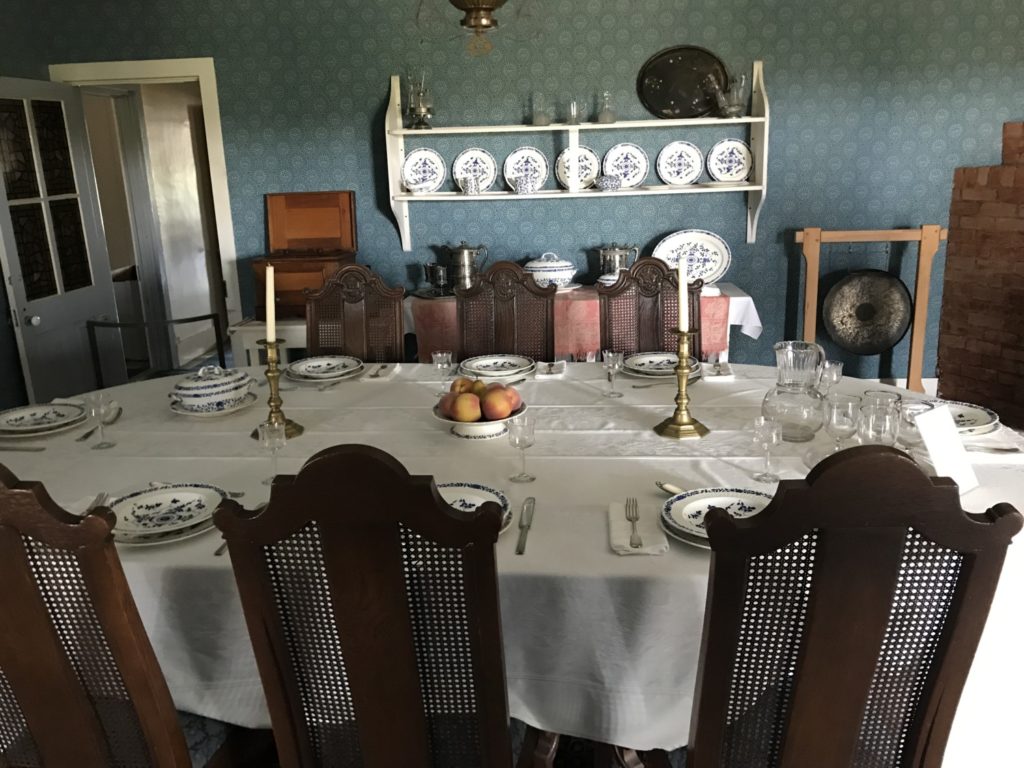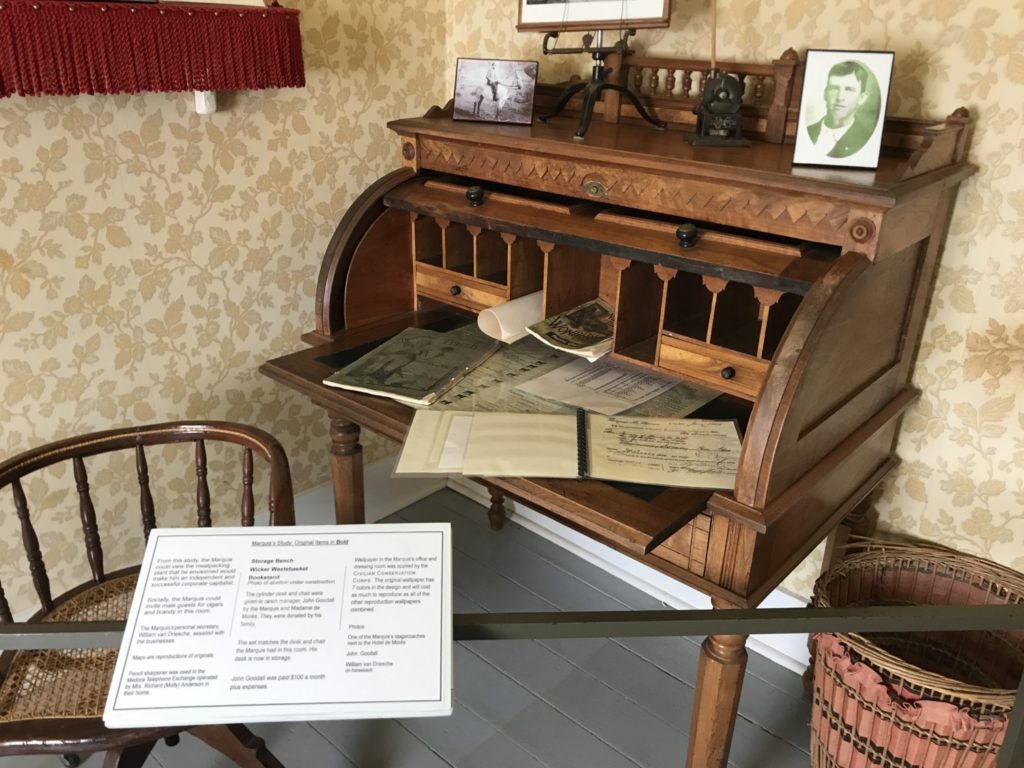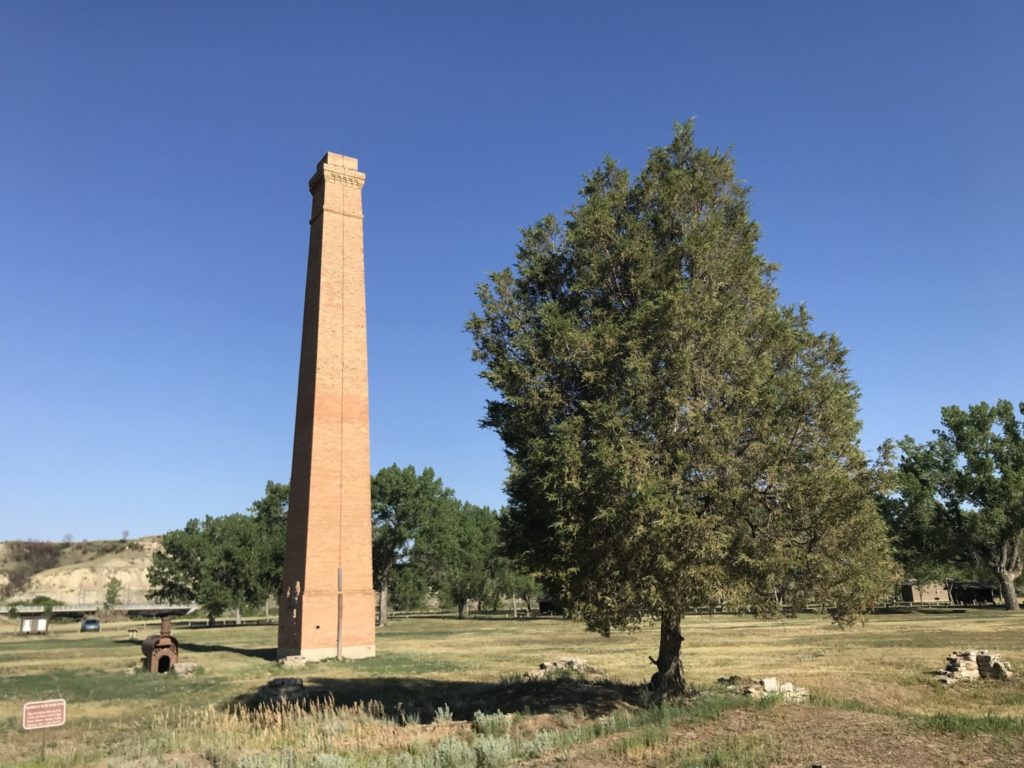Before I leave the Medora area, I want to tell you about one more place we visited, the Chateau de Mores. The Chateau de Mores was built as a hunting cabin or rustic lodge by the Marquis de Mores in 1883.

The Marquis de Mores was born Antoine-Amédée-Marie-Vincent Manca Amat de Vallombrosa in June 1858. As the eldest son of the Duke of Vallombrosa, he used the courtesy title Marquis de Morès et de Montemaggiore, but he was usually called Marquis de Morès. After training in France as a cavalry officer and serving in Algiers, the Marquis married Medora von Hoffman in 1882. Her father was a wealthy banker from New York and the Marquis used that money to finance his business ventures.
One of his ventures was a cattle-processing plant in Dakota Territory. The Marquis felt that beef slaughtered and then shipped in refrigerated railcars would be better than shipping cattle live to Chicago. He founded the town of Medora, named after his wife, and built the cattle-processing plant. He purchased 44,500 acres in the area for ranching, processing cattle, and building the town.
The Marquis was an interesting man. He was a visionary who was ahead of his time, but he was also extremely quick-tempered and anti-Semitic. He blamed the failure of his cattle-processing plant on the control the Jews had over the railroad. Shipping magnates in Chicago banded against him, and the meat-packing plant closed in 1886. Soon after, the de Mores family left Dakota Territory. The Marquis would next turn his attention to building a railroad in French-controlled Vietnam, a venture which also failed. In 1896 he was killed while trying to lead a revolt against the British and Jews in Algiers.
The Chateau de Mores is a 26 room house, rough by European aristocratic standards, but luxurious compared to the homes of other settlers in Dakota Territory. The family only lived in the house for three summers, returning to Cannes, France in the winter. When the meat-packing plant closed, the family did not return to Medora except for a brief visit much later. The house was maintained and rented out as a boarding house for a time. In 1936, the Marquis de Mores son, Louis Richard Manca-Amat, 3rd Duke of Vallombrosa and 5th Duke of Asinara donated the Chateau to the state of North Dakota with the condition that it be maintained and open to the public.
Today the Chateau de Mores has been meticulously restored with period furnishings and many items that were owned by the Marquis de Mores and his family. There is a large Visitors Center with a museum dedicated to the business ventures of the Marquis during his time in the Dakotas.

It costs $10 for a ticket to tour the museum exhibits and the Chateau, but Tom and I felt like the tour was worth it. After checking out the museum, we walked up the hill to the Chateau, where we were greeted by a docent. Several other people located through the house answered questions and gave us a brief history of the house.
Today the Chateau de Mores looks less out of place than I’m sure it did in 1883. We also walked around Chimney Park, which is home to the remains of the meat-packing plant. Learning a little more about this interesting man and his business ventures was an enjoyable way to spend a morning.



